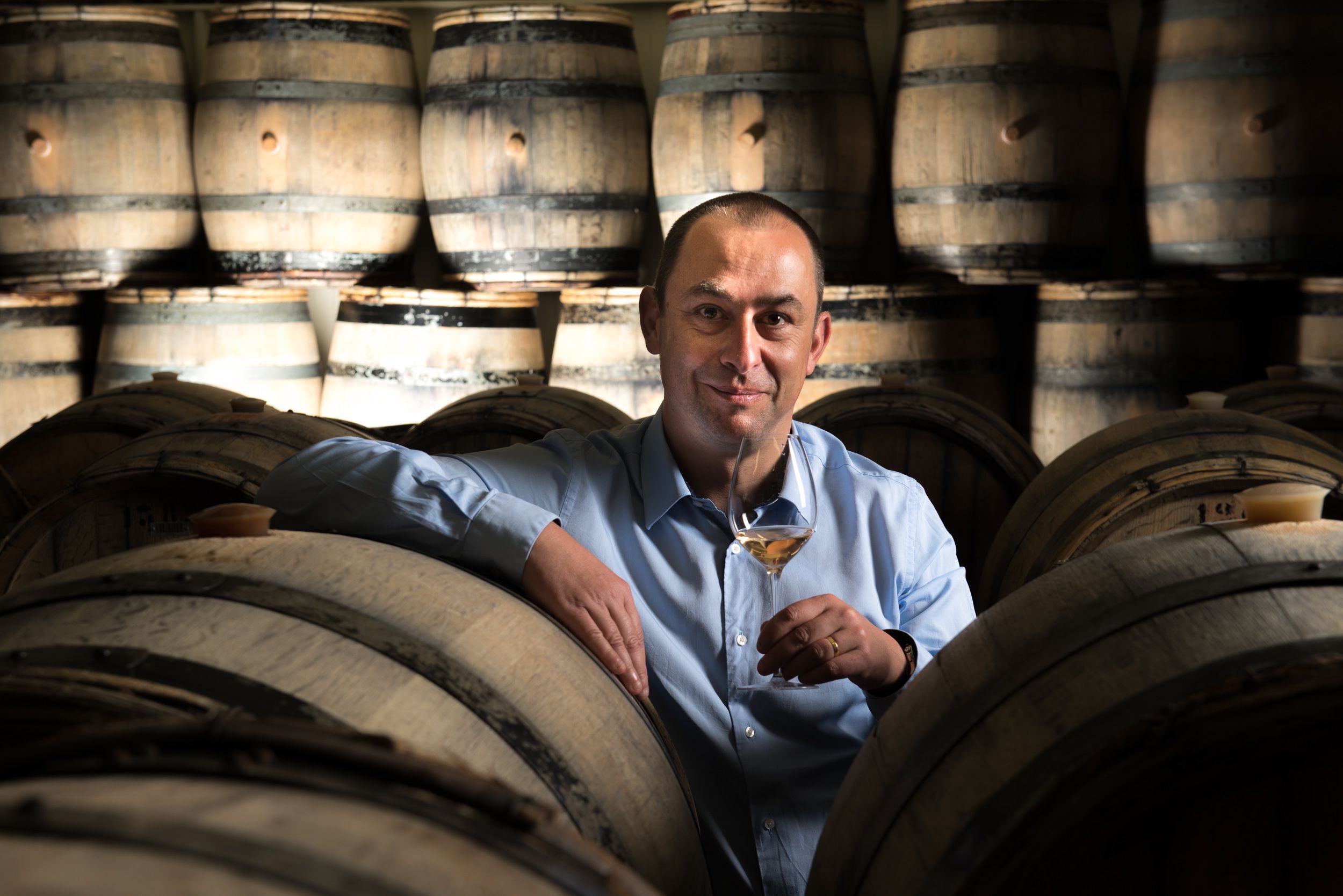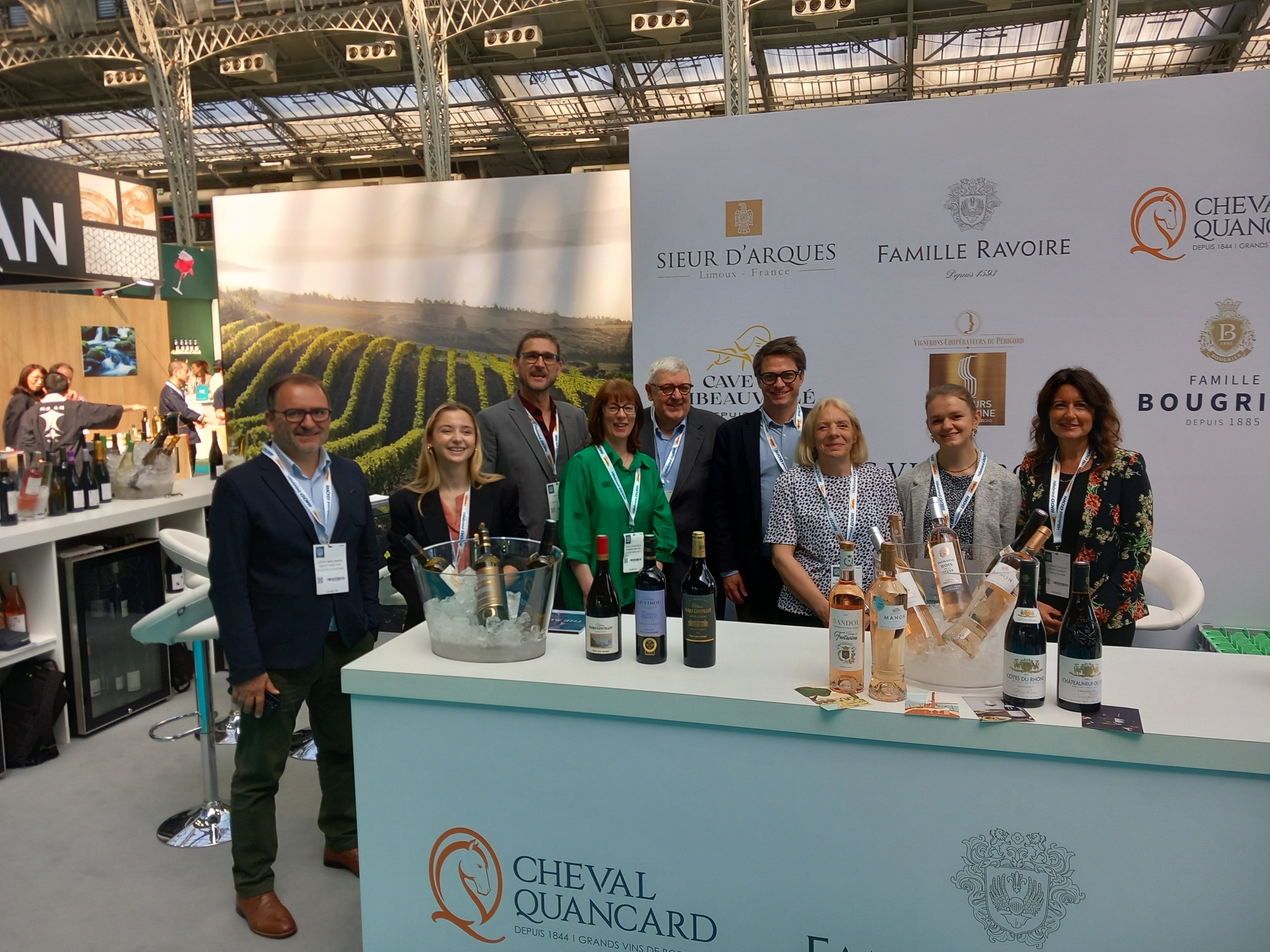Bollinger R.D 2004 makes up only 1% of the Bollinger production, who in turn make less than 1% of total Champagne production.
Bollinger’s chef de caves Gilles Descôtes is enthralled with the 2018 vintage, which is a far cry from the 2003 vintage, his first at Bollinger, where the heat was more troublesome. Descôtes was on fine form last Friday whilst hosting lunch at HIDE in Mayfair.
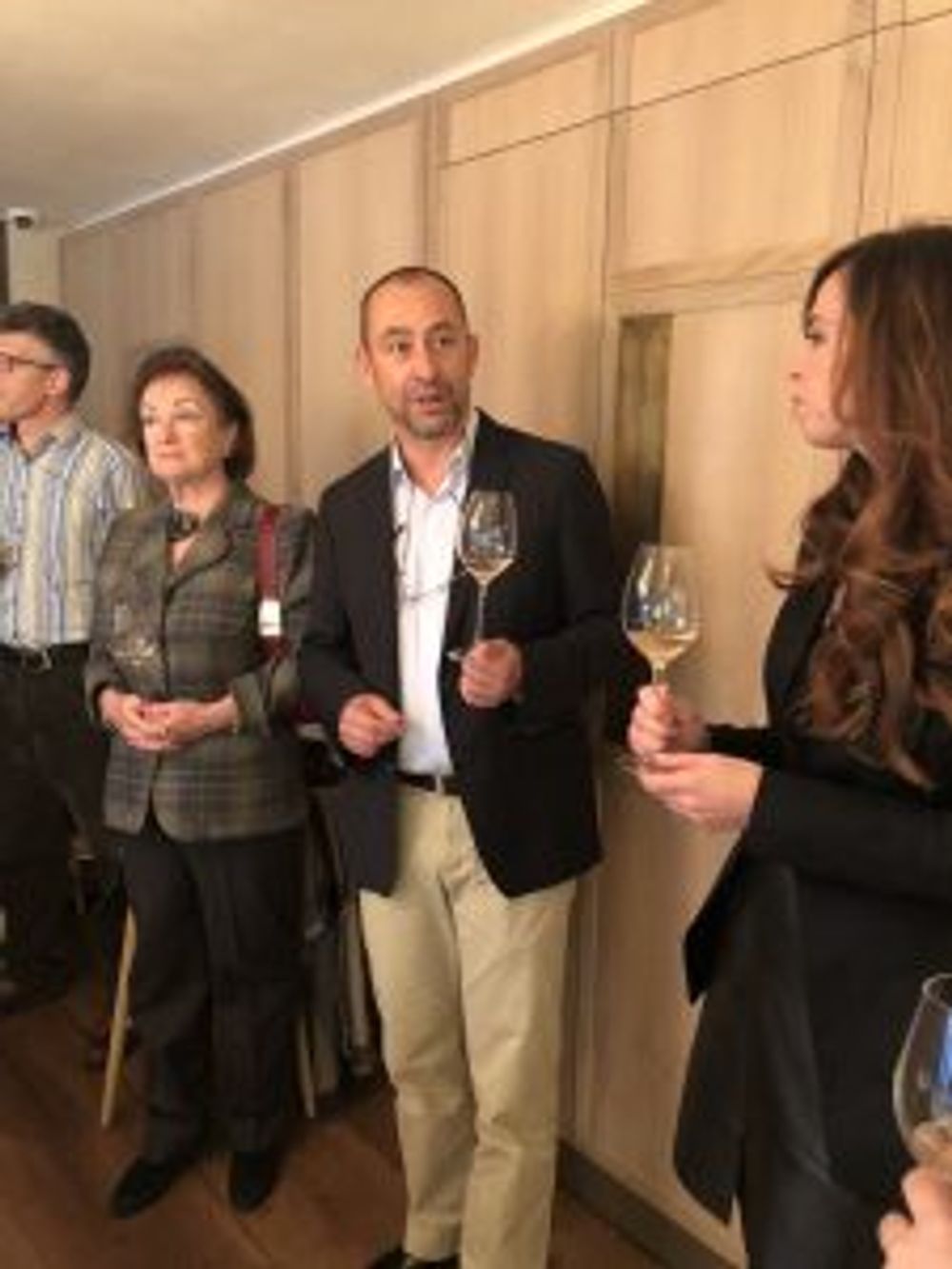
Bollinger’s chef de caves Gilles Descotes holds court at HIDE
Prior to the main event we were offered two base still wines made from Pinot Noir, which reflected the quality of the Pinot Noir that makes up the majority of Bollinger, both these were surprisingly easy drinking and could happily be sold as Vin Gris, beautifully balanced with Christmas cake nuances and gentle spices.

Although Pinot Noir plays a huge part in Bollinger, the Chardonnay component brings harmony and balance, whilst wood plays a big part in the development of Bollinger, with over 3,500 oak barrels in store, and the extra ageing that the wine has before release, upwards of six years.
Reserve wines are kept in magnum (750,000) village-by-village, year-by-year for up to 10 years, which are then added to Bollinger Special Cuvée to give the classic Bollinger style. Typically this Non Vintage Brut would have 43% of the base year, and 57% of reserve wines made from nine different vintages, composed of 60% Pinot Noir, 25% Chardonnay and 15 % Pinot Meunier.
The percentage of Chardonnay increases for La Grande Année (30%) and up to 40% for R.D. Since 2014 Bollinger has invested €4.5 million a year to purchase their own vines with the aim of owning 200 hectares by 2024.
Bollinger La Grande Année 2007 was matched to a “Tartare of bluefin tuna otoro, pickled mushroom shavings and nasturtium”, this was a lovely fatty tuna dish enhanced with the earthy mushroom perfect with the champagne that was served from magnum. The gentle aromatic perfume of cherries, succulent on the palate, gentle spices and a distant truffled forest floor nuance balanced with freshness. This has a long future.
2003 by Bollinger, a one-off made in the difficult 2003 vintage which, unlike 2018 where it was a continuous heat, in 2003 there were heat peaks. This is drinking well now with a focused savoury taste, gentle brioche overtones, golden sultanas, lemon drizzle cake, some madeira cake at the end but with a refreshing acidity.
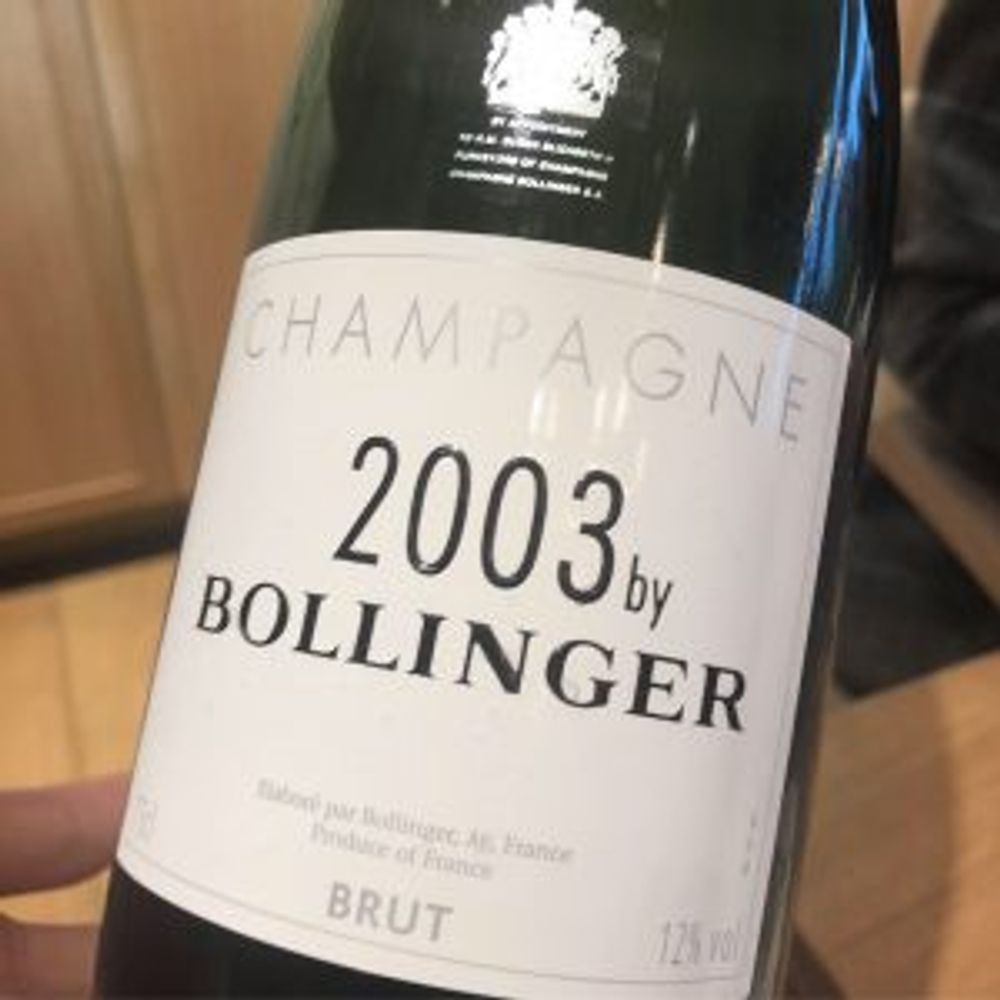
No Grande Année was produced in 2003 and this wine is quite different to the normal Bollinger style, but nevertheless an excellent wine. It was, however, killed by the excellent “Barbequed Suffolk lamb, violet mustard and spiny artichoke” perfect with say an Australian Shiraz but far too heavy for the vivacious 2003 by Bollinger with the artichokes certainly killing the palate.
Bollinger R.D 2004 was a stunning wine, fresh and opulent, tiny bubbles shining in the glass, this had a smoky background, with the freshness of ginger and crystallised lemon peel, delicate white button mushrooms, touch of mocha. The nose gives it a distinct aged feel but on the palate it is fresh, bright and just glowing. Matched with three year old Comte cheese, an odd choice for a wine that is 64% Pinot Noir, where a classic Langres cheese with its creamy and touch of smoky bacon flavour would have been far better.
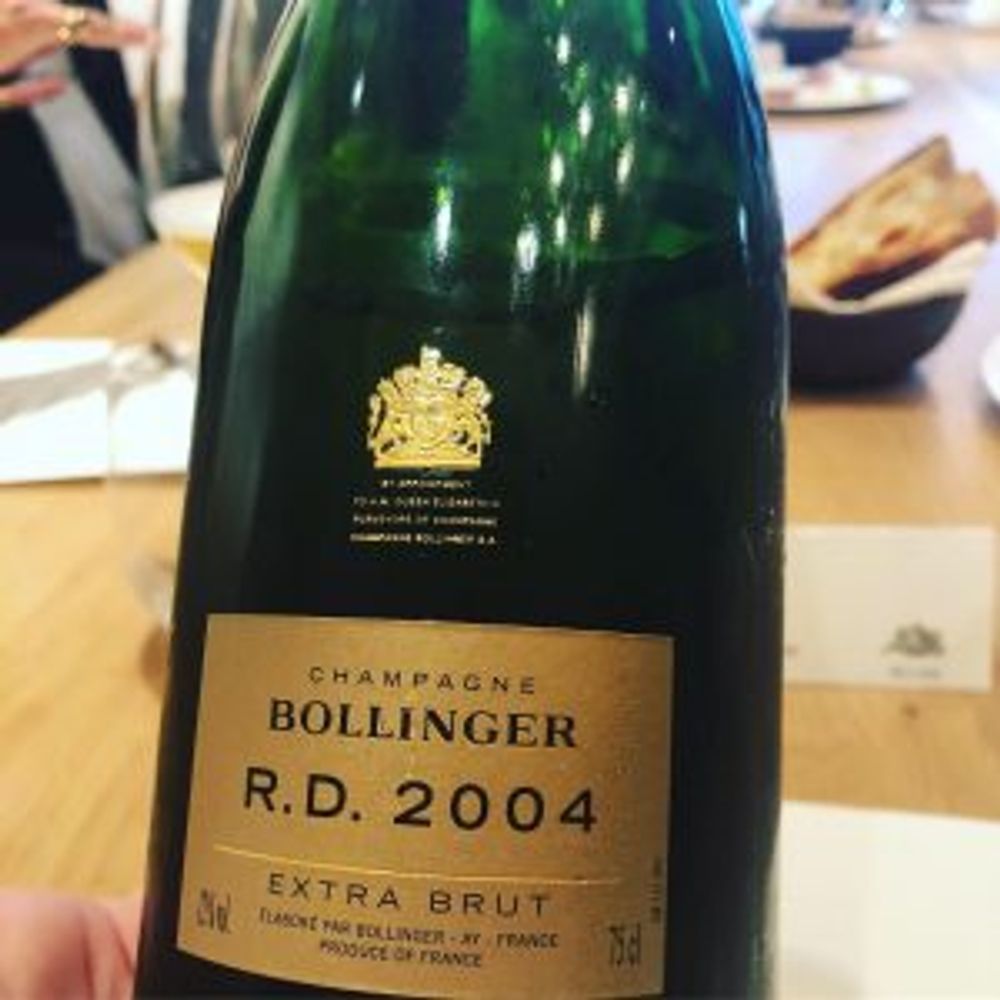
This is the 25th Vintage of Bollinger R.D. with the first being Bollinger RD 1952 launched in 1967, R.D makes up only 1% of the Bollinger production, who in turn make less than 1% of total champagne production. The R.D. 2004 was aged for 13 years on its lees under cork before being disgorged last year.
